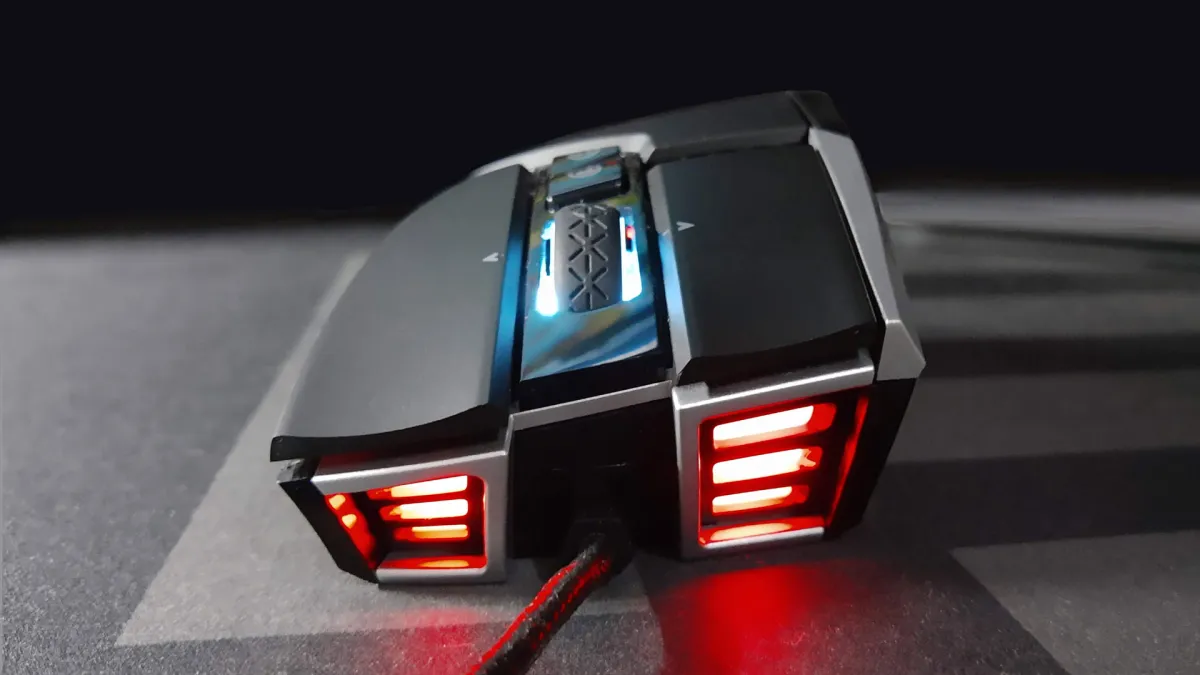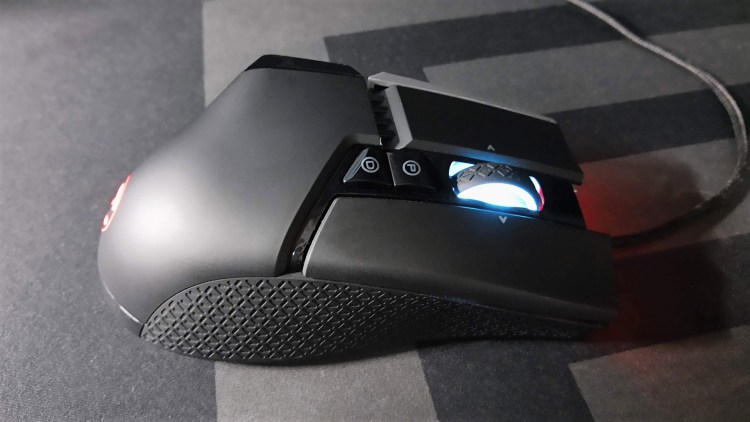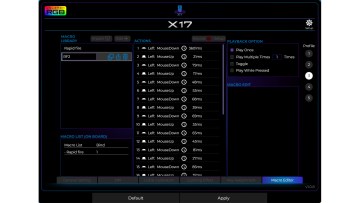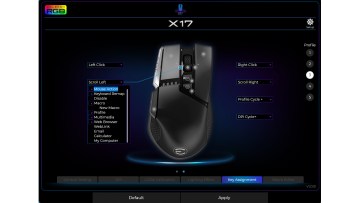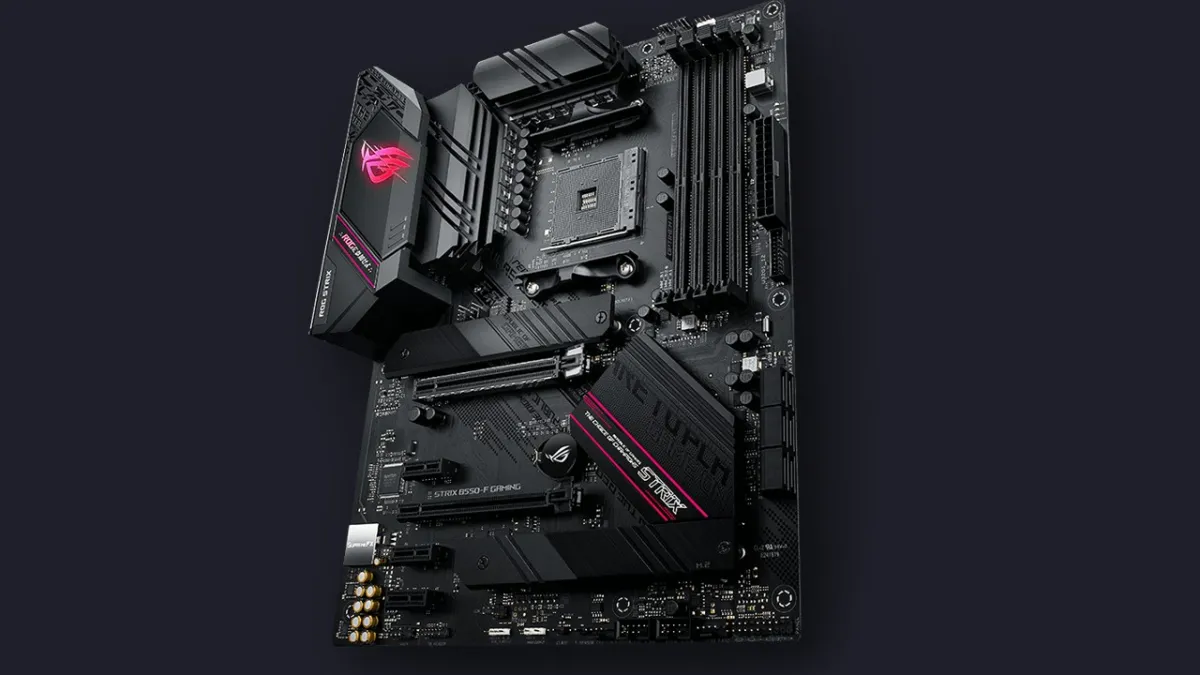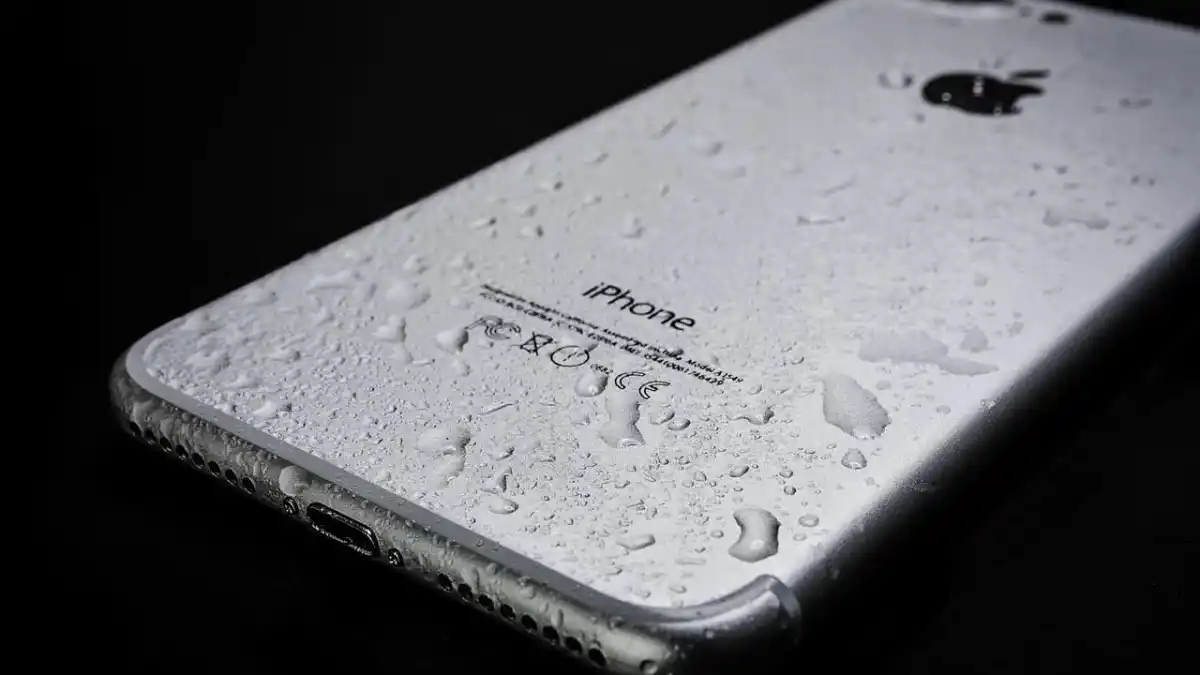Multiple brands are looking forward to the next generation of performance for gaming peripherals now, and EVGA wants to be at the forefront. That’s right, EVGA makes peripherals too. It launched the X17 and X20 mice along with the Z15 and Z20 keyboards this year, all of which support high polling rates, plus a list of other premium features. We picked up the EVGA X17 gaming mouse to review, and it’s actually pretty decent. However, it’s far from being the best gaming mouse on the market.
The X17 isn’t the first gaming mouse from EVGA, but it’s been awhile since the last effort. It seems the company decided to try and go big this time with bleeding edge features like the 8,000Hz polling rate and triple sensor design. It also comes with RGB lighting, onboard profiles, rapid-fire switches, a braided cord and fastener, a sniper button, scroll wheel tilt buttons, weights, and Nvidia Reflex support. According to EVGA, the X17 is purpose built for shooters, and it certainly feels like it. Depending on your preferences, it could be your new favorite mouse. Unfortunately, it’s not built for everyone. Let’s take a look at the specs.
EVGA X17 gaming mouse specs
We compiled the most relevant specs for you to inspect, but there is additional information about the product on EVGA’s product page. The following table offers a quick reference tool for all of the EVGA X17 features, but we’ll cover usefulness, ease of use, and thoughts on quality before weighing-in on everything in the conclusion.
| Feature | Description |
| Color and finish | Black or grey, light gloss, rubberized |
| Handedness | Right-handed |
| Sensors | Pixart 3389 + 3-Dimension Array Tech |
| DPI range | 100-16,000 |
| # of buttons | 10 |
| Click button switches | Omron – 50 million rating |
| RGB lights | 3-zone RGB lighting |
| Software support | EVGA Unleash |
| Connectivity | USB 2.0 Type-A |
| Report rate options | 125, 250, 500, 1000, 2000, 4000, 8000 |
| Onboard memory | Five profiles |
| Cable | 2m/6.5ft braided |
| Weight tuning range | 103-128g |
| Warranty | Three years |
| Price | $79.99 USD |
The X17 and X20 share the same general design and are the only mice available from EVGA at this time. While EVGA states that this mouse is primarily for shooters, it still feels like the X17 is meant to be a generally good mouse for overall gaming. The extra buttons and heavier weight will certainly be appreciated by some, but it doesn’t feel like the mouse reaches its full potential specifically for the genre. This isn’t necessarily bad, as it means there’s more room for the X17 to appeal to a wider gaming audience. Competitive shooter players may be a bit disappointed, though.
With this in mind, the X17 is clearly built with the idea that it will be carried around to competitions. It features up to five onboard profiles and a fastener for keeping the cable bundled and tidy. There’s also two meters of cable to work with, so this mouse should plug in pretty much wherever you need it.
Layout, feel, and build quality
Creating the ideal shape for a mouse is no doubt tricky and also subjective. The X17 commits to a very specific feel with its heavily slanted design that creates an asymmetrical hump for the inner side of the right palm. You feel it for the section of the palm that connects to the thumb and index finger the most. As someone with smaller hands, it feels like a perfect ergonomic fit.
I only palm grip, so I can only speak to it working well for that style of play. Aside from the awkward sniper button, it would likely work for claw grips to a degree. The mouse features a rubberized grip on each side that is certainly better than plastic, but nothing remarkable. In most cases, the grip is enough to help you hold on, and it feels premium at the very least. Given the weight of the mouse, though, you should go for something lighter if you like to claw.
Those with larger hands will immediately notice how narrow this mouse feels. If you have wider hands, you’ll want to look elsewhere. The design is more forgiving if you just have longer fingers, so these are things to think about.
The scroll wheel and buttons feel about right for placement, aside from the two on the top for DPI and profile selection. These sit a little further back than I’d prefer, and the profile button seems like it would be better on the side of the mouse near the front. I regularly forgot which was which and kept changing profiles by mistake when testing DPI. While I’m not a fan of the button placement, there is a neat feature for keeping track of which DPI setting you’re on. If you look on the inner side of the mouse towards the front, there are several LED indicator lights that will indicate which of your DPI presets is selected.
The sniper button is a bit awkward, but these things usually are on any mouse. If anything, it could be easier to engage, as the mouse almost lifts off of the desk when pressing on the sniper button. This can be partially mitigated by adding some of the 5g weights, but such a fix is something that shouldn’t be necessary in the first place.
When it comes to using the scroll wheel, it has the right amount of resistance for each tick and the rubberized grip offers plenty of traction. The build quality of the scroll wheel feels a bit cheap, however. It has a small degree of rattle to it and horizontal wobble. This mouse does feature left and right scroll wheel tilt buttons, so the wobble could stem from that. The only other complaint in terms of build quality is that the side buttons have a bit of play and shift when applying pressure, but not engaging the switch. The feedback feels good once engaged, though, and the overhanging lip on the side buttons along with the small gap in between make these easy to differentiate and use. The primary switches are made by Omron and feel nice and responsive, but aren’t hair-trigger sensitive. Whether this is a pro or con will depend on your personal preference.
The final things worth noting are the characteristics of the braided cable. While superior to a rubberized cable, it still creates a degree of drag that can be problematic. The cord is also a little stiff and may interfere with gameplay unless properly routed, but the 6.5ft length of the cable shouldn’t be an issue for anyone.
Gaming performance and tuning
Using the X17 is generally a pleasure due to its smooth tracking, responsiveness, and balanced design. During gameplay or tasks, it delivers an overall excellent experience. You do need to be a little patient with the setup to get the best results, but it’s all worth it in the end.
To get the most out of the X17, you need to download EVGA’s Unleash software, which is similar enough to iCUE, though a little more basic at this point. Unleash allows you to adjust DPI, save profiles, adjust polling rates, set up button assignments and macros, customize RGB effects, and perform surface calibrations to improve the mouse accuracy. In the case of this product, the software does everything it’s supposed to do, but I did run into some issues with it while reviewing the EVGA Z15 mechanical gaming keyboard.
Hyper-polling
Once you get into Unleash, you’ll be able to increase the polling rates above the standard 1,000Hz. You can select between 125, 250, 500, 1,000, 2,000, 4,000, and 8,000Hz. The highest setting cuts the response time down to just 0.125ms, though this should not be confused with the actual latency of the device. While we don’t have a test setup to measure the latency via the Nvidia Reflex Latency Analyzer, we were able to measure the polling rates via the BenQ Mouse Rate Checker Test.
This test isn’t perfect, as we weren’t able to exceed a polling rate of 3,941 for this mouse, but there are several factors that could explain this. Polling rates are tied to DPI, so human control is essentially a limiting factor for these higher polling rates. Just because I wasn’t able to achieve a higher polling rate value doesn’t mean the hardware is incapable of doing so. The testing software could also be capped at this rate.
No matter the case, 8,000Hz is very demanding on CPU resources and offers diminishing returns over 4,000Hz. With today’s CPUs, you’re better off prioritizing resources for more stable framerates, especially if you’re gaming at 144+ fps. However, we did notice that the 8,000Hz polling rate tanks framerates much more than 4,000Hz, so it appears to be working. As a final note about CPU performance, EVGA’s hyper-polling tech is less taxing than Corsair’s Axon solution, though not by much.
As to what you actually get out of increased polling rates, the short answer is smoother, more responsive tracking and potentially better accuracy. These benefits are subtle at best though. I observed a clear difference between 125 and 1,000Hz, as well as between 1,000 and 4,000Hz on a 144Hz monitor. But, it’s just not something you’ll notice above 2,000Hz unless you repeatedly study the differences with a trained eye.
We also tested the polling rates via Human Benchmark to see if 8,000Hz performed better than 1,000 for click latency. The response rate differences are 0.125ms versus 1ms, respectively, and that’s all we can really say you’ll get out of hyper-polling for this application. We used a Razer Atheris at 500Hz, a Corsair Sabre Champion Series, and the EVGA X17 to measure test results and found the type of switches used on the mice had the greatest impact by far on response rates. Both the Sabre and X17 consistently beat the Atheris by 10-30ms on average in our data. Just remember that this is a human-performed test, so it is inherently inconsistent data. Still, this is how the product will be used, so it’s worth considering.
All in all, hyper-polling feels like a perk, albeit a very small one. It’s only going to benefit those with high-refresh displays and lightning reflexes that are able to pick up on the subtle differences. Even if you’re not an esports pro, you may find your gaming mouse experience a little better with a higher polling rate enabled. Add one of these mice to a low-latency build, and it’ll all add up to something more noticeable.
The light show
EVGA does RGB well on its products when it comes to hardware. The lights are bright and vibrant, and there are only positive things to say about it. As already mentioned though, Unleash feels pretty basic, especially in terms of RGB options. It comes with the most popular rainbow wave patterns, a few unique effects, plus the option to quick select standard color values like red, blue green, white, etc. It gets the job done, but those spoiled by the excessive number of options in iCUE will wish there was a little more. Fortunately, it’s easy enough to customize the different RGB zones on the mouse. Each zone can have unique effects as well. Unleash should please most users.
Should you buy the EVGA X17 gaming mouse?
In review, the EVGA X17 gaming mouse fares alright as far as build quality and features go. It offers higher polling rates, nice RGB, decent software, and some thoughtful design choices (as well as some disappointing ones). Even after extended use, there are zero signs of wear to mention on the review unit.
While EVGA portrays it as an FPS mouse, it really feels like more of a general purpose mouse with some performance enhancements that make it viable in the genre at the very least. Unfortunately, the mouse is simply too heavy and lacks the necessary glide to compete with ultralight mice if you’re truly after a high performance FPS mouse for things like tournament play.
Depending on your perspective, you may call the design a mix of dated and modern styling or just a great retro throwback to earlier years. When it’s sitting on your desk, you won’t really notice how the front of it looks. Either way, it blends in with most setups if you get it in the black option and the design is very comfortable if your hands aren’t too big.
At the MSRP of $80 USD, this mouse does feel a bit overpriced when considering how fierce the competition is right now with products like the Corsair Sabre that cost significantly less. It’s harder to recommend the EVGA X17 gaming mouse for that reason. The silver lining is that you can actually get it for much less than MSRP now. While our review reflects our thoughts on the product at its MSRP, we can easily recommend getting the X17 at its current discounted street prices. For the amount of features you can get along with a three year warranty, it’s guaranteed to please.

